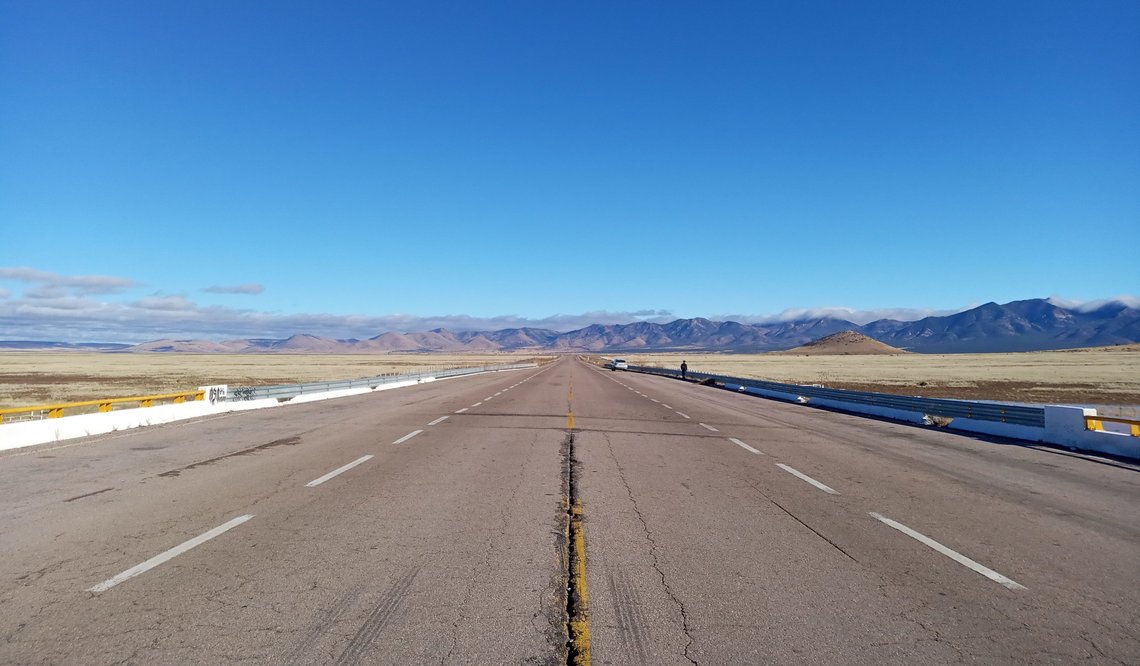By Mirna Manteca, Mexico Program Road Ecology Coordinator, Wildlands Network
Birds are not the first group of species that come to mind when you think of road ecology. Most people would assume they just fly over vehicles. In reality, birds are frequent victims of collisions with motor vehicles. Wildlands Network is a leader in the field of road ecology, which aims to understand and mitigate wildlife-vehicle collisions and the impact of roads on ecosystems. Our research has identified Mexico’s Highway 2 as a road of critical concern for wildlife.

The Sky Island Region of southeastern Arizona and northwestern Mexico is one of the most biologically rich places in the Americas. A section of Federal Highway 2 in Sonora, Mexico completely bisects the region. It runs parallel to the U.S./Mexico border in many areas, and is one of the most significant human-made barriers that disrupts the north-south movement of wildlife.
In collaboration with Sky Island Alliance and Cuenca Los Ojos, we conducted roadkill-monitoring surveys along the stretch of Highway 2 between Ímuris and the state border with Chihuahua during 2016 and 2018. Roadkill monitoring involves driving slowly and logging all animal remains found on or next to the highway in order to document and quantify which species are most impacted, and where vehicle-wildlife conflicts occur. With sufficient sample size, patterns, trends and “hot-spots” emerge. These data can be used to help develop mitigation proposals for highway safety.

Data analysis revealed that after mammals, birds were the second-most affected group of species, representing 15.8% of recorded roadkill. The species most often found were Great Horned Owl, Barn Owl, and Greater Roadrunner. Among the seven species registered in the study that are listed in Mexico’s endangered species list, the Norma Oficial Mexicana-059, we recorded Cooper’s Hawk and Montezuma Quail. The presence of these listed species justifies requesting mitigation actions from government agencies, namely the Secretaría de Comunicaciones y Transportes (SCT) that is Mexico’s equivalent of the US Department of Transportation.
Wildlands Network has been promoting building wildlife crossings in Sonora since 2014, with an emphasis on large mammals such as black bear, jaguar, and Mexican wolf. However, many of these structures, like roadside fencing, would also help reduce the impacts to avian species by discouraging low-elevation flight across a high-speed roadway. Just like large carnivores, many bird species require extensive home ranges as well as healthy and intact migratory corridors on both local and continental scales. In the face of climate change and more frequent drought events, landscape connectivity is now even more essential for birds to thrive. Wildlife crossings, such as bridges, tunnels, and fencing, specifically designed for wildlife and motorist protection, constitute a practical mitigation method that allows animals of different sizes and habits to cross highways safely, therefore maintaining healthy, viable populations and reducing and wildlife-vehicle collisions.

As a result of our efforts, in 2019 the Sonora State Congress passed a reform to the State Land Planning Law that makes wildlife crossings a mandatory element of Regional Land Management Programs. This is a huge first step for connectivity conservation in Sonora. Even though it will likely be several years before wildlife crossings are fully integrated into state planning tools, having this legal framework for land management that benefits biodiversity is essential in advancing the protection of birds from the impact of roads in Sonora. It is important that while these plans are being updated, we continue to study and learn about the impact of highways on regional wildlife, more so that we can proactively enhance the mobility of animals that have been swimming, walking or flying on the Sonoran landscape for millennia.

